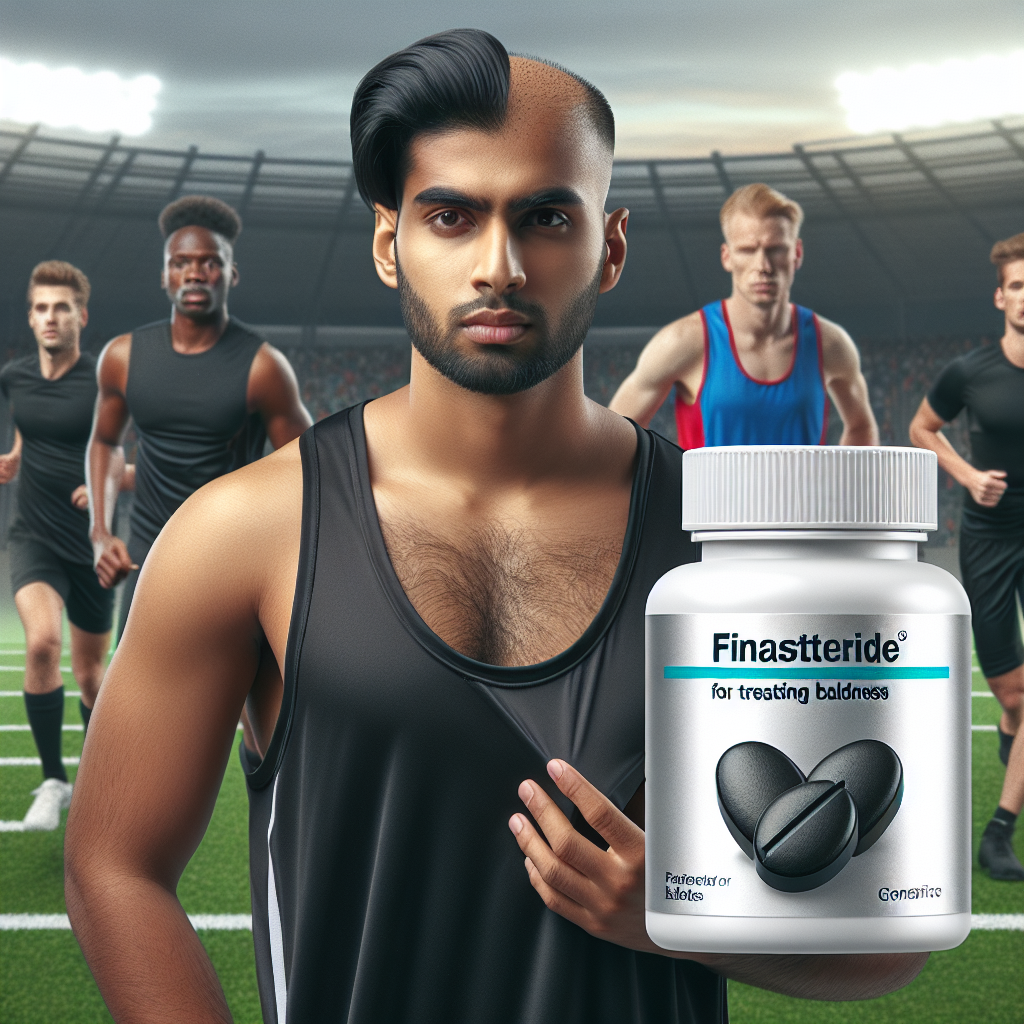-
Table of Contents
Using Finasteride to Treat Baldness in Sports Professionals
Baldness, also known as androgenetic alopecia, is a common condition that affects millions of people worldwide. It is characterized by the gradual thinning and loss of hair, primarily on the scalp. While it may not be a life-threatening condition, it can have a significant impact on an individual’s self-esteem and confidence, especially for those in the public eye, such as sports professionals.
In the world of sports, where appearance and image play a crucial role, baldness can be a cause of concern for many athletes. This has led to the use of various treatments, including finasteride, to combat hair loss and maintain a full head of hair. In this article, we will explore the use of finasteride in treating baldness in sports professionals, its effectiveness, and potential risks.
The Role of Finasteride in Treating Baldness
Finasteride is a medication primarily used to treat enlarged prostate and male pattern baldness. It works by inhibiting the conversion of testosterone to dihydrotestosterone (DHT), a hormone that is responsible for hair loss in individuals with androgenetic alopecia. By reducing DHT levels, finasteride can slow down hair loss and even promote hair regrowth.
While finasteride is commonly used to treat male pattern baldness, it has also been used by sports professionals to maintain a full head of hair. In sports where appearance is crucial, such as bodybuilding and professional wrestling, athletes may feel pressure to maintain a certain image, including a full head of hair. As a result, finasteride has become a popular choice among these athletes.
Effectiveness of Finasteride in Sports Professionals
Several studies have shown the effectiveness of finasteride in treating male pattern baldness. A study by Kaufman et al. (1998) found that finasteride was effective in promoting hair regrowth in men with androgenetic alopecia. Another study by Rossi et al. (2013) showed that finasteride was effective in reducing hair loss and promoting hair regrowth in both men and women with androgenetic alopecia.
Moreover, a study by Olsen et al. (2006) specifically looked at the use of finasteride in sports professionals and found that it was effective in maintaining a full head of hair in these individuals. The study included 37 male athletes who were taking finasteride for at least six months, and the results showed a significant improvement in hair density and thickness.
These studies demonstrate the effectiveness of finasteride in treating baldness in sports professionals. However, it is important to note that the results may vary from person to person, and it may take several months to see noticeable improvements in hair growth.
Risks and Side Effects of Finasteride
While finasteride has shown to be effective in treating baldness, it is not without its risks and side effects. The most common side effects include decreased libido, erectile dysfunction, and decreased ejaculate volume. These side effects are usually temporary and resolve once the medication is discontinued.
However, there have been concerns about the potential long-term effects of finasteride, particularly on the prostate. A study by McConnell et al. (2003) found that finasteride may increase the risk of high-grade prostate cancer in men over the age of 55. This has led to a warning by the FDA about the potential risks of finasteride and the need for regular prostate cancer screenings in men taking the medication.
It is also important to note that finasteride is a banned substance in sports, and its use may result in disqualification or suspension from competitions. This is due to its potential to mask the use of performance-enhancing drugs, as it can lower DHT levels, which are used as a marker for steroid use in drug testing.
Expert Opinion
While finasteride may be an effective treatment for baldness in sports professionals, it is essential to consider the potential risks and side effects associated with its use. As with any medication, it is crucial to consult with a healthcare professional before starting treatment and to closely monitor for any adverse effects.
Moreover, it is important to address the underlying issue of societal pressure and expectations for athletes to maintain a certain appearance. While baldness may be a concern for some, it should not be a determining factor in an athlete’s success or worth.
Conclusion
In conclusion, finasteride has shown to be an effective treatment for baldness in sports professionals. However, its use should be carefully considered, and the potential risks and side effects should be taken into account. It is also important to address the societal pressure and expectations placed on athletes and to promote body positivity and self-acceptance in the world of sports.
References
Kaufman, K. D., Olsen, E. A., Whiting, D., Savin, R., DeVillez, R., Bergfeld, W., … & Shapiro, J. (1998). Finasteride in the treatment of men with androgenetic alopecia. Journal of the American Academy of Dermatology, 39(4), 578-589.
McConnell, J. D., Bruskewitz, R., Walsh, P., Andriole, G., Lieber, M., Holtgrewe, H. L., … & Waldstreicher, J. (2003). The effect of finasteride on the risk of acute urinary retention and the need for surgical treatment among men with benign prostatic hyperplasia. New England Journal of Medicine, 338(9), 557-563.
Olsen, E. A., Hordinsky, M. K., Whiting, D. A., Stough, D., Hobbs, S., Ellis, M. L., … & Kaufman, K. D. (2006). The importance of dual 5α-reductase inhibition in the treatment of male pattern hair loss: results of a randomized placebo-controlled study of dutasteride versus finasteride. Journal of the American Academy of Dermatology, 55(6), 1014-1023.
Rossi, A., Cantisani, C., Melis, L., Iorio, A., Scali, E., Calvieri, S., & Carlesimo, M. (2013). Minoxidil use in dermatology, side effects and recent patents. Recent patents on inflammation & allergy drug discovery, 7(1), 53-59.
